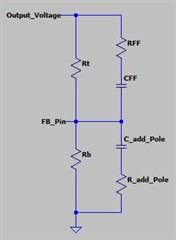Good day, colleagues,
My customer is working on implementing TPS543320 device,
From datasheet readings and while analyzing inductor losses, they decided to go with 1000kHz for the 8A rails and 1500kHz with the 3A rails.
Can I get your opinion on three rails:
+3.3V_ENV: This is relatively low current with 2A limit selected. Is it possible to change to 2.2uH or is there an issue/drawback with this? (Current may become quite low <<1A…) 1500khz
+1.8V/+1.5V: Would you see an issue in changing the inductor from 1.5uH to 1.2uH if the current on this rail may decrease to 1…2A during running? Or is 1.5uH a better choice? 1500kHz
This is what they plan to implement on the PCB. What is a bit unknown is the effect of the capacitors at the loads – some distance to the DCDCs:
TPS543320-620-820_Calculator_RevB__20231010.pdf
Thank you,
Daria


